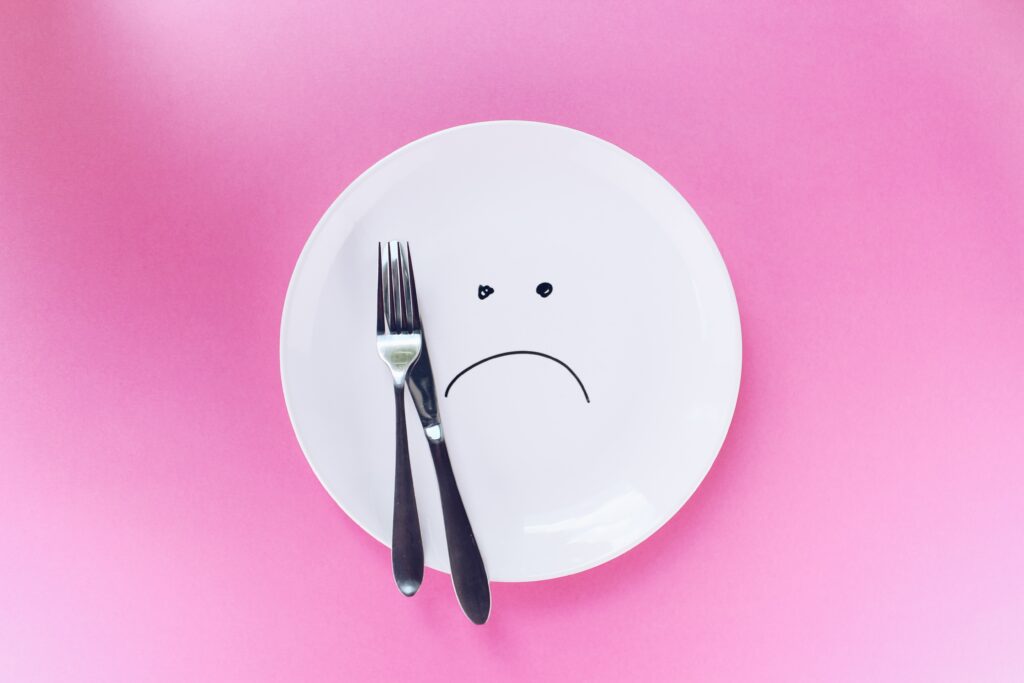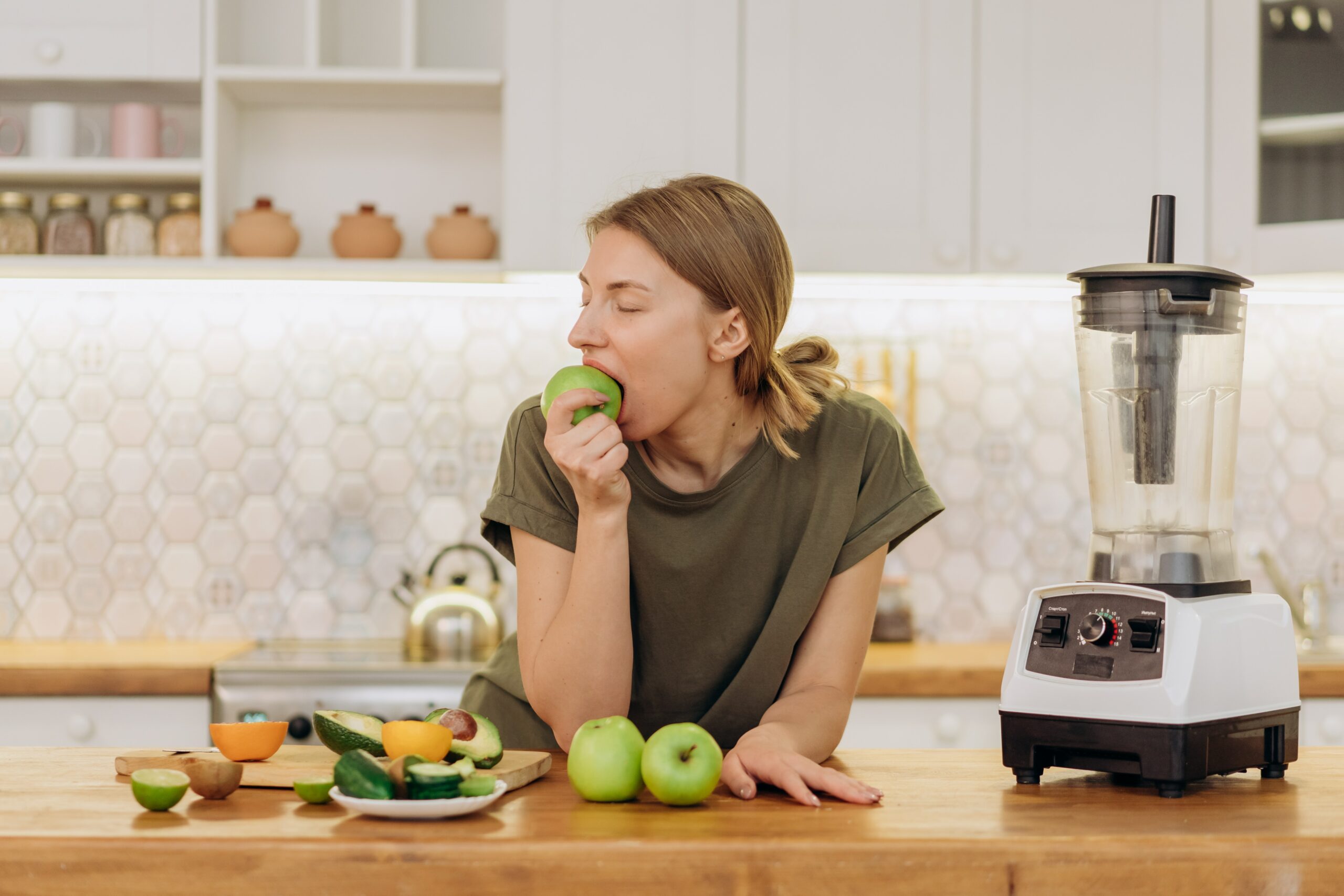How to Permanently Overcome Yo-Yo Dieting
“The maintenance of health really depends on knowing who you are, getting in touch with your body, getting in touch with yourself, being mindful of all of that, and honoring who you are.”
—Gabor Mate
A man about to go on a diet once emphatically declared to me, “I know how to lose weight: I’ve lost 50 pounds five times.”
I was struck by his confidence.
What he couldn’t see was his approach was also the perfect way to gain 50 pounds.
He’d done that six times.
In fact, he’d spent most of his adult life alternately going on and falling off diets.
This is yo-yo dieting.
A Bridge to Nowhere
Imagine a new bridge is built in your municipality. Everyone loves it, and it’s celebrated as a roaring success.
Until a month later when it collapses and dozens of people die.
No one would ever build a bridge like that again.
But people go back on diets that collapsed all the time.
Something that “worked” for a month didn’t actually work. Something only works if it keeps working. If it’s sustainable.
Diets aren’t sustainable.
In fact, the terms “dieting” and “yo-yo dieting” are synonymous. Dieting is yo-yo dieting. Dieting always leads to the vicious cycle of yo-yo dieting.
The Biggest Illusion
Imagine a set of before-and-after weight-loss photos:
- For the before photos, imagine a group of 14 people that includes both men and women who weigh an average of 325 pounds.
- For the after photos, imagine the same group of people with an average weight of 200 pounds.
These people lost an average of 125 pounds in six months! Wow!
There’s something a little special about the people I’m telling you about: They were participants in a season of the television show The Biggest Loser.
As such, their experience of dieting and losing a lot of weight wasn’t only captured in photos but was watched by millions of people.
After the dramatic season finale, many viewers emphatically declared, “I’m gonna do that!” You might feel that way right now.
But wait—there’s more to the story. It’s something the show’s creators and celebrity “wellness professionals” would like to keep secret.
I’m going to tell you anyway.
There’s something a little unique about the season of The Biggest Loser we’re talking about. A group of researchers had access to the show’s participants who agreed to participate in a scientific study.
Hollywood met science and the “reality” of “reality television” came face-to-face with the reality of empirical evidence.
The plot thickens.
The researchers followed the subjects for six-and-a-half years: the six months it took to film the show plus an additional six years. This gives us some tremendous insight into the long-term ramifications of dieting.
You might want to sit down for this.
The first important piece of data concerns the subjects’ weight:
In the six years following the filming of the show, the subjects went from an average of 200 pounds to an average of 290 pounds. (1)
They gained back most of the weight they lost. This happens so often with dieters I don’t even flinch when I hear results like this.
Cyclically gaining and losing weight is considered part of the game in toxic-vapid diet culture. It’s a big problem: Unsustained weight loss is no weight loss at all.
The next important piece of data concerns the subjects’ resting metabolic rate.
Resting metabolic rate is a measure of how much energy you expend just from being alive.
The initial data:
Before the filming of the show, the average resting metabolic rate of the subjects was 2,607 kilocalories per day. After the filming of the show—and enduring six months of dieting—the average resting metabolic rate of the subjects was 1,996 kilocalories per day. At that point, dieting suppressed the subjects’ resting metabolic rates by an average of 611 kilocalories per day. (1)
The researchers continued to measure resting metabolic rate for the six years following the filming of the show:
Six years after the filming of the show, the average resting metabolic rate of the subjects was 1,903 kilocalories per day. At that point, dieting suppressed the subjects’ resting metabolic rates by an average of 704 kilocalories per day. (1)
The researchers also compared the actual resting metabolic rates of the subjects at each of those moments in time with the predicted resting metabolic rates of age-matched, sex-matched peers to determine their metabolic adaptation, a more accurate way of measuring resting-metabolic-rate suppression:
At the end of the filming of the show, the subjects’ average metabolic adaptation was 275 kilocalories per day. Six years after the filming of the show, the subjects’ average metabolic adaptation was 499 kilocalories per day. (1)
Dieting greatly suppresses your metabolism, and the effects last long after you’ve stopped dieting.
In practical terms, if your metabolism is suppressed by 499 kilocalories per day, it means:
- You eat a Big Mac every day of your life, before you get out of bed in the morning, without enjoying a morsel of food.
- You have to exercise two hours for every hour an age-matched, sex-matched peer has to exercise.
It means you live with a Big Mac penalty every day.
It means your first hour of exercise every day gets you nowhere.
It means your metabolism is broken. (Don’t worry, it can be repaired.)
Forbidden Food
When someone tells you that you can’t have certain foods, it only makes you want those foods more.
When someone tells you that you can only have a certain amount of food, it only makes you want food more.
A very interesting scientific study reveals a great deal about this phenomenon.
Subjects read a one-sided message that was either a negative message (“All dessert is bad.”) or a positive message (“All dessert is good.”). After reading the straightforward message, subjects were given a plate of chocolate-chip cookies while they watched a short program.
Being warned all dessert is bad would result in less consumption of chocolate-chip cookies, right?
Being given the freedom to eat dessert would result in more consumption of chocolate-chip cookies, right?
That’s not what happened:
Subjects who read the negative message ate 39 percent more chocolate-chip cookies than subjects who read the positive message. (2)
This is reactance.
Reactance is an unpleasant motivational reaction to someone trying to control your behavior. When you experience reactance, you tend to want to do the opposite of what you’re being told to do as a way of maintaining your autonomy.
Reactance often slides into disinhibition.
Disinhibition is a kind of impulsiveness. A teenager told they have to be home by 10 p.m. might first come home at 10:30 p.m. to show their parents who’s boss. The next time, after being punished and being told what to do again and more sternly, they might stay out all night. “F*** it, I’m already in trouble,” they say to themself.
People do this with food all the time.
Their diet tells them they can’t have any food A. They have some food A, then they have the whole box. F*** it.
Their diet tells them they can only have a certain amount of food. They have a little more than their allotted amount, then they have twice their allotted amount. F*** it.
When people try to avoid certain foods and limit their food intake, they tend to get the exact opposite of their desired results. And they tend to feel terrible.
Exclusion and Restriction
Exclusion and restriction are the hallmarks of diets.
You now have a better understanding of the devastating physiological and psychological consequences of exclusion and restriction.
Here’s what the damage looks like:
- Diets have a 95-percent failure rate.
- Of people who go on one diet, 35 percent become addicted to dieting.
- People in the United States spent more than $50 billion on diet products last year.
Here’s what the damage feels like:
- DIET: Deprivation Is Eventually Tiresome
- DIET: Distorted, Insufficient Eating Technique
- DIET: Driven into Eating Trauma
Let’s call it out:
diet | noun | a one-size-fits-all, quick-fix, dogmatic system of eating based on exclusion and restriction, done to lose weight quickly and/or gain a sense of control in your life, that fosters yo-yo dieting, weight cycling, and a dysfunctional relationship with food that’s a constant struggle, and leaves you feeling like a failure
Diets sometimes go by other names such as cleanses, detoxes, and fasts. No matter the name, if it’s a dogmatic system of eating based on exclusion and restriction, it’s a diet.
The Antidote
The antidote to dieting is anti-dieting. I also call it attuned eating:
anti-diet (attuned eating) | noun | a personal and natural system of eating based on enjoyment and nourishment, done as self-care, that fosters sustained wellness, as well as sustained weight loss if you have weight to lose, and leaves you feeling in harmony with yourself
How does that sound?
Here’s what it looks like:
- Get in touch with your hunger. Notice how it naturally waxes and wanes throughout the day.
- Practice accepting your hunger as it is without any judgment.
- Practice eating when you’re hungry (hungry not starving).
- Practice eating until you’re full (full not stuffed).
- Practice getting in touch with your desires for specific foods.
- Practice accepting your desires for specific foods as they are without any judgment.
- Practice following your desires for specific foods.
- Notice what foods leave you feeling your very best. Really get in touch with how you feel when you eat specific foods, in the hours after eating those foods, and the day after eating those foods.
- Whenever possible, eat in a calm environment.
- Whenever possible, eat with your close ones.
- Practice eating deliberately and really savoring your food.
- Approach eating with a spirit of play.
- Fine-tune how you eat over time as you get to know yourself better and better.
Here’s what it feels like:
- Freedom
- Harmony with yourself
- Holistic wellness (physical, emotional, and mental)
- Sustained weight loss if you have weight to lose
Desires and Cravings
You might be thinking if you follow your desires, you’ll end up eating Cheetos and Oreos all the time. This is a common concern, especially for people who are used to dieting and being told they can’t have Cheetos and Oreos. With one important distinction, I can assure you this won’t be the case.
Let’s start by defining our terms:
- Desires are deep-seated wantings for that which deeply satisfies and nourishes you.
- Cravings are addictive wantings for that which satisfies you on only the shallowest of levels, always leaves you unsatisfied and wanting for more, and harms you in some way.
Your desires aren’t a problem. Your desires work for you not against you.
Desires for specific foods are natural phenomena. They aren’t problems to overcome.
Let’s say you’re on a low-fat diet. You have your low-fat-diet dinner: steamed asparagus, grilled chicken, and a baked potato. You finish dinner and feel incomplete. Like you’re missing something. Deep in your bones, you want some butter, but you know you “can’t”. You repress that feeling, that desire that’s been built into the very fabric of your being over millions of years of evolution. You stuff it way down. Fat is the enemy of your diet: “No fat! Get away from me, fat!” And you suffer. And you learn to squelch and deny your true self.
Let’s say you’re on a low-carbohydrate diet. You have your low-carbohydrate dinner: steamed kale with olive oil, a big steak, and a handful of Brazil nuts on the side. Your friend offers you some blueberries from a farm down the road. You really want to have some blueberries, but you know you “can’t”. You repress that feeling, that desire that’s been built into the very fabric of your being over millions of years of evolution. You stuff it way down. Carbohydrate is the enemy of your diet: “No carbohydrate! Get away from me, carbohydrate!” And you suffer. And you learn to squelch and deny your true self.
Can you feel the fighting going on in these examples? It’s you against food. It’s you against your natural desires for specific whole, natural, real foods. It’s you against you.
Ironically, many enter the world of diets with a spirit of self-care, but the game they find there isn’t conducive to self-care at all. Any process that pits you against yourself does a number on your relationship with yourself. You against you is the antithesis of self-care.
Back to desires and cravings.
I’m encouraging you to follow your desires not your cravings.
Remember:
- Desires are deep-seated wantings for that which deeply satisfies and nourishes you.
- Cravings are addictive wantings for that which satisfies you on only the shallowest of levels, always leaves you unsatisfied and wanting for more, and harms you in some way.
If you’re unsure if a wanting is a desire or a craving, ask yourself, “Will this deeply satisfy me?” If your answer is yes, it’s probably a desire. If your answer is no, it’s probably a craving.
If you’re still unsure, just follow the wanting. Then see how you feel after you’ve had that food. If you’re satisfied, it was a desire. If you feel stronger, it was a desire.
If you’re left still wanting more of that food, even after you’ve had a lot of it, and you actually want something else like some sleep or an outing with a friend, it was a craving. If you feel weaker, it was a craving.
When you follow a craving, it will leave you feeling less than your very best in some way. You might feel tired. You might have an upset stomach. You might feel like your thinking is cloudy. You might feel ashamed. You might feel lonely.
This isn’t a bad thing. This is nature. This is learning. The next time you’re in a similar situation, your ability to discern between a desire and a craving will be better. Over time, you’ll get really good at telling the difference.
You’ll notice you don’t actually desire junk food. You crave it. You’ll notice you desire whole, natural, real foods you enjoy. Foods that both taste good to you and leave you feeling your very best. You’ll also notice your desires extend to proactively meeting your other needs such as getting plenty of sleep and engaging in fulfilling relationships.
Over time, you’ll notice your cravings fading, even going away completely.
You don’t need to fight your cravings. In fact, doing so will almost always backfire. Instead, simply follow your desires. Since your desires bring you to what deeply satisfies and nourishes you, when you follow them, you meet your needs. The more you meet your needs, the more your cravings fade away. When you’re getting the real thing, toxic-vapid mimics completely lose their appeal.
Your desires are the language of your flawless built-in guidance system. Your desires move you toward exactly what you need to thrive. When you’re not following your desires and meeting your needs, you’ll have a lot of cravings. The key to reducing cravings isn’t fighting against them; the key to reducing cravings is following your desires and meeting your needs.
This is a process of learning to trust yourself again. Gradually. One step at a time.
Enjoyment and Nourishment
The antidote to exclusion and restriction is enjoyment and nourishment.
You might’ve been conditioned to think:
“If it tastes good, it’s bad for you; if it tastes bad, it’s good for you.”
I encourage you to start thinking this way instead:
“It tastes good and it’s good for you; it’s good for you and it tastes good.”
That is, focus on whole, natural, real foods you enjoy and prepare them in ways that make them even more enjoyable.
When it comes to enjoyment and nourishment, you can have it all.
Eating well is about turning up the nutritiousness and turning up the enjoyment.
It’s about eating food that’s both nutritious and delicious.
It’s about eating food that’s nutrilicious.
The Roll Experiment
You might be thinking without limits on how much you can eat, you’ll eat way too much. You might be thinking you can’t just stop eating when you’re full.
This is more unfortunate conditioning from diet culture.
Let’s do a thought experiment.
Imagine you’re at home after work. You’ve had a full day, and you’re hungry.
I bring you a huge bowl of rolls and tell you, “Have as much as you like.” If you’re like most people, you’ll have one then two then three. It’ll be hard to stop. Because no matter how many rolls you have, you’ll never feel full.
It’s possible to eat hundreds of kilocalories worth of rolls and still not feel full.
Now imagine the same experiment but substitute the huge bowl of rolls with a huge bowl of Brussels sprouts, a huge platter of shrimp, a huge bowl of fruit salad, a huge bowl of almonds, or a huge bowl of sunflower seeds.
If you’re like most people, you’ll have some then naturally stop.
You’ll stop well before you’ve consumed a large amount of energy.
Can you imagine eating two pounds of shrimp? Five apples? Two cups of pumpkin seeds?
Whole, natural, real food satisfies, in part, because it’s micronutrient-dense.
When you have rolls, chips, soda, and the like, your body “says”, “Thanks for the energy. I appreciate it. We also need some calcium and zinc right now. We’re also getting low on vitamins A and C. Your body “tells you this” by remaining hungry.
When you have whole, natural, real food, your body simply says, “Thanks,” and you feel full. It’s satisfied. You’re satisfied. Because you have what you need to survive and thrive.
The fiber, unadulterated protein, and unadulterated fat in whole, natural, real food are also very satisfying.
As you lean into your desires and eat the whole, natural, real foods you enjoy, you’ll be giving your body what it needs. This’ll greatly reduce any tendency you might have to keep eating after you’ve had enough.
I encourage you to tune into yourself and eat when you’re hungry and stop eating when you’re full. This gets a lot easier as you learn to give yourself what you need.
It’s a Practice
Remember, learning to eat well doesn’t involve a one-size-fits-all approach.
And that’s a good thing. You know how one-size-fits-all approaches go.
Remember, learning to eat well isn’t a quick-fix approach.
And that’s a good thing. You know how quick-fix approaches go.
Learning to eat well is a practice. It’s a lifestyle.
I invite you to make today the day you stop going on and off diets.
I invite you to make today the day you start practicing attuned eating and taking great care of yourself holistically.
And I invite you to do so with a spirit of play.
Diets are treated like serious business. You might be conditioned to brace yourself to go on a diet. Attuned eating isn’t like that. You don’t have to grip the wheel so tightly. You can relax. You can explore. This might not come easy to you at first, but I encourage you to give it a try.
Extending Your Practice
As you learn to trust yourself more and more and to learn to meet your true food needs more and more, something very powerful is likely to happen.
You’re likely going to naturally start extending your practice of attuned eating into a practice of attuned living.
What are the ways of moving your body that leave you feeling your very best?
What are the ways of approaching sleep that leave you feeling your very best?
What are the ways of approaching rest that leave you feeling your very best?
What are the ways of approaching work that leave you feeling your very best?
What are the ways of approaching relationships that leave you feeling your very best?
What else do you need to help you feel your very best?
These are some of the questions that are likely to occur to you as you learn to trust yourself more and more and to learn to meet your true food needs more and more.
Because how you do one thing is how you do everything.
To this point, you’ve primarily been following diets and squelching and denying your true self.
Now you’re attuned to yourself and your needs.
With the people I coach, this almost never stops with food. It almost always ripples into other areas of their lives.
It’s a beautiful thing!
And it’s available to you when you ditch dieting and combine attuned eating with a holistic approach to self-care and wellness.
Blake
That’s what my client Blake did.
She was in her late 50s when she came to me and had been yo-yo dieting since she was a teenager.
I wish I could say I don’t hear that all the time.
Blake was ready. She was very ready. In fact, she was already working on this on her own before she came to me, but she wasn’t making as much progress as she wanted to be making.
She was very conditioned to think self-care and wellness meant being on a diet. She’d spent most of her life either being on a diet and feeling like she was “being good” or not being on a diet and feeling like she was “being bad”.
She came to a point where she realized she couldn’t keep living like that.
We worked together to help her gradually learn to eat when she was hungry, thoroughly enjoy eating, and stop when she was full instead of simply “following her diet”.
We worked together to help her learn what kinds of foods and combinations of foods left her feeling her best.
We worked together to help her learn to move her body in ways she absolutely loved. This took some time because she was used to thinking of exercise solely as a way of “working off” food she’d eaten, especially “bad food”. It turned out he absolutely loved yoga. She absolutely loved walking. She absolutely loved dancing. She absolutely loved a good circuit class. When she became free to enjoy moving her body for the sake of moving her body, she was in heaven.
We worked together to help her learn to tune into herself and trust herself when it came to proactively meeting her other needs too.
For starters, she loved camping and being in nature, so she got back to doing that more.
As she started proactively meeting more of her needs more of the time, her cravings for junk food gradually faded away.
She realized that she didn’t need to fight against food. She realized that she needed to lean into living her life. Her relationship with food became a lot more easeful and a lot more harmonious as she did that.
Blake ended up losing about 40 pounds and has kept it off for over five years. She lost weight gradually and without it being her primary goal. Her primary goal was to learn to have a harmonious relationship with food. As she did so, she learned how to have a harmonious relationship with herself, and she learned to take great care of herself holistically. She was also pleasantly surprised when her blood pressure got low enough that she no longer needed medication.
Your wellness journey will be your wellness journey. It won’t be Blake’s, but what Blake can do, you can do.
(1) Persistent Metabolic Adaptation 6 Years after The Biggest Loser Competition. Obesity, 2016, 10.1002/oby.21538.
(2) Messages from the Food Police: How Food-Related Warnings Backfire among Dieters. Journal of the Association for Consumer Research, 2016, 10.1086/684394.
About Jason Gootman
Jason Gootman is a Mayo Clinic Certified Wellness Coach and National Board Certified Health and Wellness Coach as well as a certified nutritionist and certified exercise physiologist. Jason helps people reverse and prevent type-2 diabetes, cardiovascular disease, and other ailments with evidence-based approaches to nutrition, exercise, stress reduction, holistic wellness, and, most importantly, lasting behavior improvement and positive habit formation. As part of this work, Jason often helps people lose weight and keep it off, in part by helping them overcome the common challenges of yo-yo dieting and emotional eating. Jason helps people go from knowing what to do and having good intentions to consistently taking great care of themselves in ways that help them add years to their lives and life to their years.
Stay in the loop!
Subscribe today, and get wellness tips delivered straight to your inbox.





